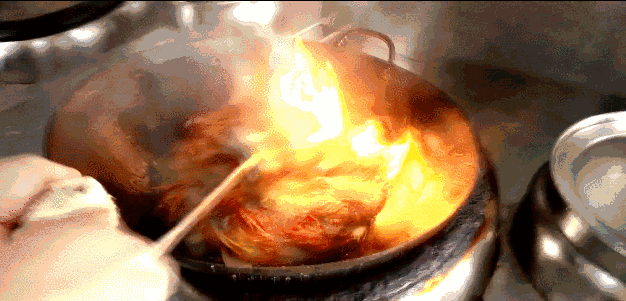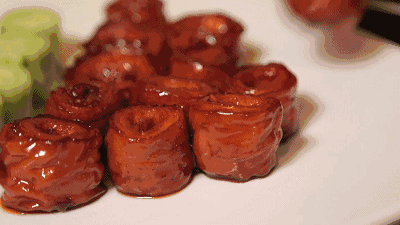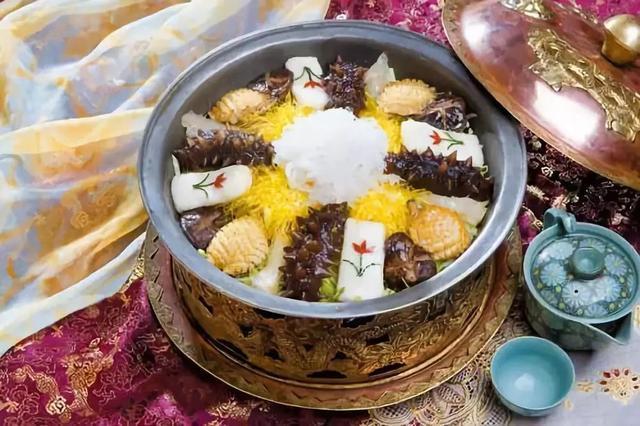Lu Cai also means Shandong cuisine, It is a Qilu flavor that originated in Shandong Province. Its birthplace is Boshan District, Zibo City, Shandong Province. It is the only self-styled cuisine among the four traditional Chinese cuisines (also eight cuisines) (compared with the influential cuisines such as Huaiyang, Sichuan, and Guangdong). It is the cuisine with the longest history, the richest techniques, the highest difficulty, and the most skills.

As the only self styled cuisine among the eight traditional Chinese cuisines, Shandong cuisine originated in Qilu. It is the cuisine with the longest history, the richest techniques, the highest difficulty and the most skills in China.

As early as the Qin and Han Dynasties, the economy of Qilu was unprecedentedly prosperous, and the cooking skills were far better than those in other regions. In the Sui and Tang Dynasties, Shandong cuisine gradually became the representative of northern cuisine.

“Never tired of eating details and enjoying delicacy” is Confucius’ dietary concept. It is more appropriate to describe Shandong cuisine, which is famous for “exquisite carving”.

In the process of millennium development, Shandong cuisine is also divided into many schools:
- Jiaodong is good at seafood
- Confucius is good at luxury
- Jinan is good at controlling fire
- Zibo is good at making soup

Jinan cuisine refers to the dishes in Jinan, Dezhou and Tai’an. It has a wide range of materials, strong color, bold and unrestrained, and its cooking methods are good at explosion, frying, burning and frying.

Melting the crisp, tender and delicious cattail into the rich and delicious soup, it not only won the reputation of “the top soup in Jinan”, but also explained the beauty of soup in Jinan cuisine.

Jinan cuisine pays attention to the freshness of hanging soup, which is divided into clear soup and milk soup:
- Clear soup, fresh and delicious
- Milk soup, white and mellow
When cooking, you can add freshness and flavor by gently scooping a spoonful of soup. The hours of soup making process also inherits the craftsman spirit of Shandong cuisine chefs to the world.

Cook first and then fry, soft, tough, fragrant and tender, fusion of five flavors and entrance of tendons.

It is fried first and then slipped. It is golden in color, burnt outside and tender inside. It is sour, sweet and delicious. It tastes delicious. The head and tail of carp are high, which is the beautiful implication of “carp jumping over the dragon’s gate”.

As the land of Qilu, the hometown of Confucius and Mencius, the cuisine handed down by the Confucius family in Qufu has precious materials, fine cooking, exquisite containers and elegant dish names. It is a necessary cuisine for many important banquets. Because Qufu is close to the inland, most of the Confucius family dishes are characterized by “mountain treasures”.

The soup dish steamed with sea cucumber and fish maw as raw materials, supplemented by chicken, duck, pea and yam, was named by the emperor in the Qing Dynasty and gradually developed into a well-known court dish because of its variety of ingredients and precious materials.

It is fresh, tender, smooth and elastic. It can not only be a dish alone, but also be an independent banquet. As soon as you bite off the pastry outside, the snow-white, tender and smooth tofu inside slips into your stomach, which makes you have endless aftertaste.

In order to ensure the freshness of the duck, the old chefs used the method of “burning incense and timing” to accurately grasp the steaming time, which coincided with the cooking time limit of three incense, making the duck crisp and rotten and rich in taste. When burning incense and cooking, it seemed to express their respect for the gods, so it was named “Fairy Duck”.

Jiaodong cuisine originated in Fushan County, Yantai and radiated to Weihai, Qingdao and other places. It is said that in the history of Fushan, there have been several imperial chefs, “if you want to eat well, go around Fushan”, which has become a classic portrayal of Jiaodong cuisine.

It is the survival wisdom of the Chinese people to adapt to nature. With the gift of the sea, Jiaodong cuisine characterized by “seafood” has become a charming part of Shandong cuisine.

The cooking of “braised sea cucumber with Scallion” has high requirements for heat and soup.
Experienced Shandong cuisine chefs can add thick juice and flavor into it, and the thick color shows the outside, presenting the diners with an excellent delicacy of soft, smooth, fat, waxy and delicious soup.

It is golden in color, scorched outside and tender inside. When cooking, choose fresh, sweet and fishless oysters to marinate and taste, fry quickly, and sprinkle some pepper salt on the table. It tastes salty, fresh, soft and tender, which is unforgettable.

Zibo cuisine is a characteristic dish in Boshan and other places. It has rich cooking means and unique flavor. It not only has local characteristics, but also has the cultural connotation of Shandong cuisine.

An ordinary piece of tofu is shaped after frying, hollowed out and added with pork stuffing, and finally steamed and watered. It becomes an exquisite “tofu box”. When the guest slowly lifts the lid with chopsticks, the waiter will shout “see treasure out of the box” and send good wishes to the guest.

Take every four samples, every four products and every four pieces as a group, which is divided into two parts. When the first overture of dried fruits, fruits and snacks is over, wipe the table and reopen the banquet, and re serve cold dishes, main dishes, pasta, etc.

Traditional classic, fat but not greasy

It symbolizes a happy event and implies beauty

Moistening dryness and clearing heat, nourishing yin and nourishing face
